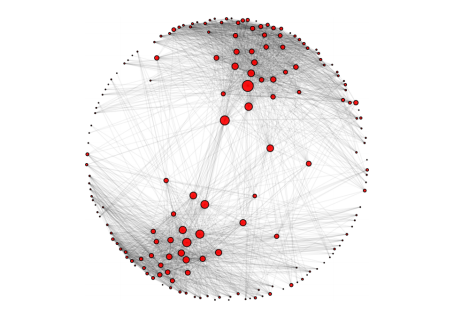How to Burst the "Filter Bubble" that Protects Us from Opposing Views
Computer scientists have discovered a way to number-crunch an individual’s own preferences to recommend content from others with opposing views. The goal? To burst the “filter bubble” that surrounds us with people we like and content that we agree with.
The term “filter bubble” entered the public domain back in 2011when the internet activist Eli Pariser coined it to refer to the way recommendation engines shield people from certain aspects of the real world.
Pariser used the example of two people who googled the term “BP”. One received links to investment news about BP while the other received links to the Deepwater Horizon oil spill, presumably as a result of some recommendation algorithm.
This is an insidious problem. Much social research shows that people prefer to receive information that they agree with instead of information that challenges their beliefs. This problem is compounded when social networks recommend content based on what users already like and on what people similar to them also like.
This story is only available to subscribers.
Don’t settle for half the story.
Get paywall-free access to technology news for the here and now.
Subscribe now
Already a subscriber?
Sign in
This is the filter bubble—being surrounded only by people you like and content that you agree with.
And the danger is that it can polarise populations creating potentially harmful divisions in society.
Today, Eduardo Graells-Garrido at the Universitat Pompeu Fabra in Barcelona as well as Mounia Lalmas and Daniel Quercia, both at Yahoo Labs, say they’ve hit on a way to burst the filter bubble. Their idea that although people may have opposing views on sensitive topics, they may also share interests in other areas. And they’ve built a recommendation engine that points these kinds of people towards each other based on their own preferences.
The result is that individuals are exposed to a much wider range of opinions, ideas and people than they would otherwise experience. And because this is done using their own interests, they end up being equally satisfied with the results (although not without a period of acclimitisation). “We nudge users to read content from people who may have opposite views, or high view gaps, in those issues, while still being relevant according to their preferences,” say Graells-Garrido and co.
These guys have tested this approach by focusing on the topic of abortion as discussed by people in Chile in August and September this year. Chile has some of the most restrictive anti-abortion laws on the planet–it was legalised here in 1931 and then made illegal again in 1989. With presidential elections in November, a highly polarised debate was raging in the country at that time.
They found over 40,000 Twitter users who had expressed an opinion using the hashtags such as #pro-life and #pro-choice. They trimmed this group by choosing only those who gave their location as Chile and by excluding those who tweeted rarely. That left over 3000 Twitter users.
The team then computed the difference in the views of these users on this and other topics using the regularity with which they used certain other keywords. This allowed them to create a kind of wordcloud for each user that acted like a kind of data portrait.
They then recommended tweets to each person based on similarities between their word clouds and especially when they differed in their views on the topic of abortion.
The results show that people can be more open than expected to ideas that oppose their own. It turns out that users who openly speak about sensitive issues are more open to receive recommendations authored by people with opposing views, say Graells-Garrido and co.
They also say that challenging people with new ideas makes them generally more receptive to change. That has important implications for social media sites. There is good evidence that users can sometimes become so resistant to change than any form of redesign dramatically reduces the popularity of the service. Giving them a greater range of content could change that.
“We conclude that an indirect approach to connecting people with opposing views has great potential,” say Graells-Garrido and co.
It’s certainly a start. But whether it can prevent the herding behaviour in which users sometimes desert social media sites overnight, is debatable. But the overall approach is admirable. Connecting people is important when they share similar interests but arguably even more so when their views clash.
Ref: arxiv.org/abs/1311.4658 : Data Portraits: Connecting People of Opposing Views
